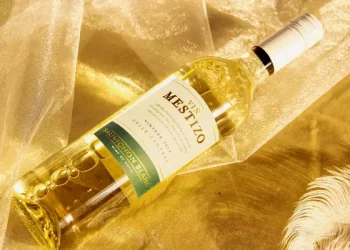For those who like wine, decanting is a common step before drinking wine.
The main purpose of decanting is to remove the precipitation in the old wine, and then let the young wine contact more oxygen, accelerate oxidation, so that the aroma of the wine fully spread out.
But since most people decant red wine, do you need to decant white wine?
When does it need to sober up?
Most white wine should be consumed at below room temperature, so it is common to freeze it before drinking it.
However, if you freeze it too much and make it too cold, the aromas won’t be able to fully develop.
At this point, if you pour it into a decanter, its temperature will rise quickly.
This seems to be the opposite of the first point, but it’s not contradictory.
The wine bottle is a good insulating body, allowing the wine in the bottle to be separated from the surrounding environment;
At this point, if you want to change the temperature of the liquor, you have to go through the bottle first.
To get the wine to the desired temperature as quickly as possible, pour it into a wide decanter and place the decanter in ice water.
It is a good idea to freeze the decanter in ice water for 1-2 minutes before pouring the wine into the decanter.
When white wines are served at the right temperature, they will most likely have an attractive aroma.
However, some white wines are shy, either because they are younger or because of their varietal characteristics.
If you can barely smell a white wine after pouring it into a glass, try to “wake up” it.
Believe it or not, some experts even drink champagne every now and then.
For champagne, the bubbles are beautiful, but it’s the aroma and flavor that counts.
Some white wines develop attractive aromas as soon as they are poured into the glass, and can develop more and more distinctive aromas if they are allowed to linger in the glass.
Robert Mondavi’s Fume Blanc Reserve, for example, offers aromas of white peach, vanilla and oak as you pour it into the glass.
Then slowly, you can smell more subtle aromas, such as white flowers, spices, sweet herbs and various fruits.
When drinking a white wine like this, if you don’t have enough time to wait for it to fully “bloom” in the glass, you can “wake” it up before drinking to speed up its ripening.
If a white wine has an unpleasant odor, it does not mean that it is of bad quality.
Young white wines have an unpleasant taste, mostly because of sulfur dioxide in the wine.
Extremely tight bottle stoppers, such as screw stoppers, are so tightly sealed that gases such as sulfur dioxide cannot escape from the bottle, so you may also smell an unpleasant odor when you open the bottle.
Pour the wine into a decanter to wake it up and the smell will go off easily.
Most people don’t have this problem, but if you’re organizing a large professional wine tasting or wine training course and you have two or more bottles of each wine, make sure the bottles are in the same condition.
For two identical bottles of wine, if one is lagging behind, you can pour both bottles into a large decanter at the same time and blend them together.
The latest market dynamics at any time to see, please pay attention to.












































